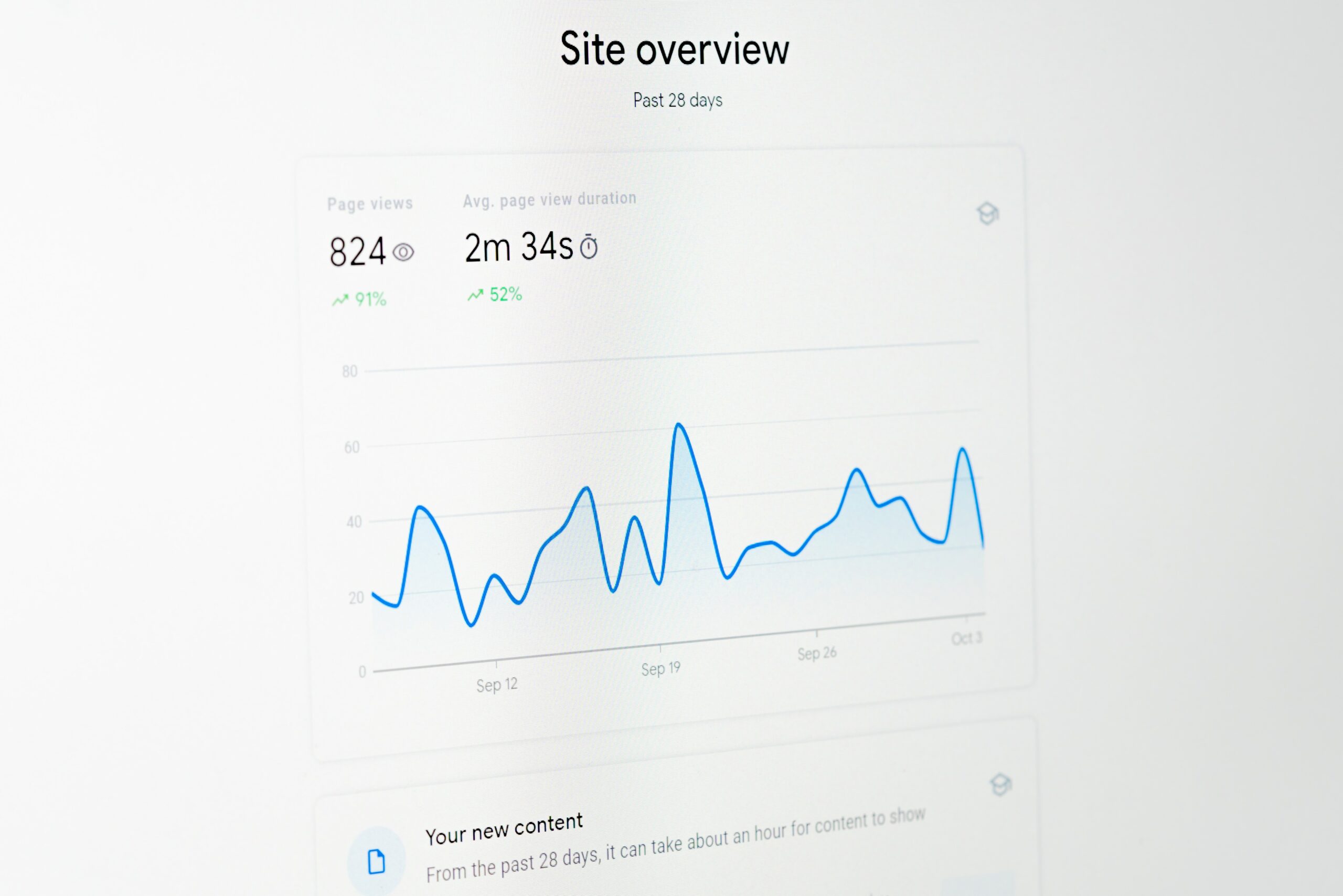Monitoring the right key performance indicators (KPIs) is the best way to avoid spending time and money on something that isn’t driving the expected profit. KPIs are a control system that lets you identify which tactics work and which don’t. Which SEO KPIs should you be tracking to measure your client’s online success?
1. Organic traffic and visibility
This KPI measures the number of people who come to your website from organic search results. It’s one of the most important metrics to track because a rise in visitors indicates that you’ve accomplished the main SEO objective: increasing the number of people who visit and see your website. This is an excellent method to demonstrate your site’s increased visibility because impressions show the searches it ranked for, even if they didn’t result in clicks. Typically, that’s because you see an increase in ranked keywords, but these aren’t in traffic driving positions (yet). An increase in impressions shows growth in your organic traffic and can help validate and drive marketing efforts.
2. Keyword rankings
Keyword rankings are “lead metrics” for organic traffic. The relationship between keyword rankings and organic traffic is straightforward; If you’re ranking well for a keyword with high search volume, you can expect a lot of organic traffic. If you’re not ranking well for a keyword with high search volume, you can expect minimal organic traffic.
The more relevant keywords your website ranks for, the better. Once you’ve achieved higher search ranks, you’ll be able to achieve the other goals such as traffic, leads, and conversions. Tracking this KPI will provide you with the data you need on your current positions and how they are changing.
3. Organic CTR
The percentage of people who click on your link compared to the total number of users that see your search results is known as a click-through rate (CTR). In other words, a high CTR equals a lot of traffic. CTR is also an important search engine ranking signal because it influences SERP ranks. For instance, even high rankings won’t help you attract more visitors if your search snippets don’t look appealing. As a result, your CTR leaves much to be desired. Low click-through rates will tell search robots that your site doesn’t meet users’ expectations, which may result in lower search rankings.
People often make a huge mistake overlooking this KPI when focusing on traffic and rankings. By tracking your organic CTR, you can find out why your high impressions don’t result in significant traffic and fix the problem.
4. Bounce Rate
Bounce rate is another key indicator of whether your material engages people who visit the page. It can also effectively determine how relevant it is to the search queries it ranks for. A high bounce rate typically means the page isn’t capturing users’ attention, meaning missed opportunities to turn this traffic into conversions. Sometimes, it only takes small changes to see a noticeable improvement, but if you’re not regularly tracking it, you might not spot the opportunity.
A bounce rate of 40-55% is considered average. If the percentage is excessive, it shows that the page is unhelpful to the search query. Keep an eye on your client’s bounce rates to see which website pages have the highest rates and create a plan to reduce them.
5. ROI
For almost every business, an SEO strategy aims to drive a return on investment. Tracking ROI from your SEO activities is the best measure of success—increasing your client’s revenue and surpassing what they’ve spent. Sometimes it can be difficult to track or tie out, but it’s the best way to truly know your efforts were worth it.
You can quickly see this relationship with our own insight called Calculated Revenue. It’s calculated by multiplying Direction Request by 80%, then multiplying by your location(s) Average Transaction Value. You can do the math yourself on a spreadsheet (for who knows how many locations and clients you might be managing) …or we can save you time with our analytics dashboard! 


Locl equips 1000s of multi-location businesses in marketing agencies to win the trust of consumers with online location profiles that are accurate, consistent, and compelling. Talk to Sales!


